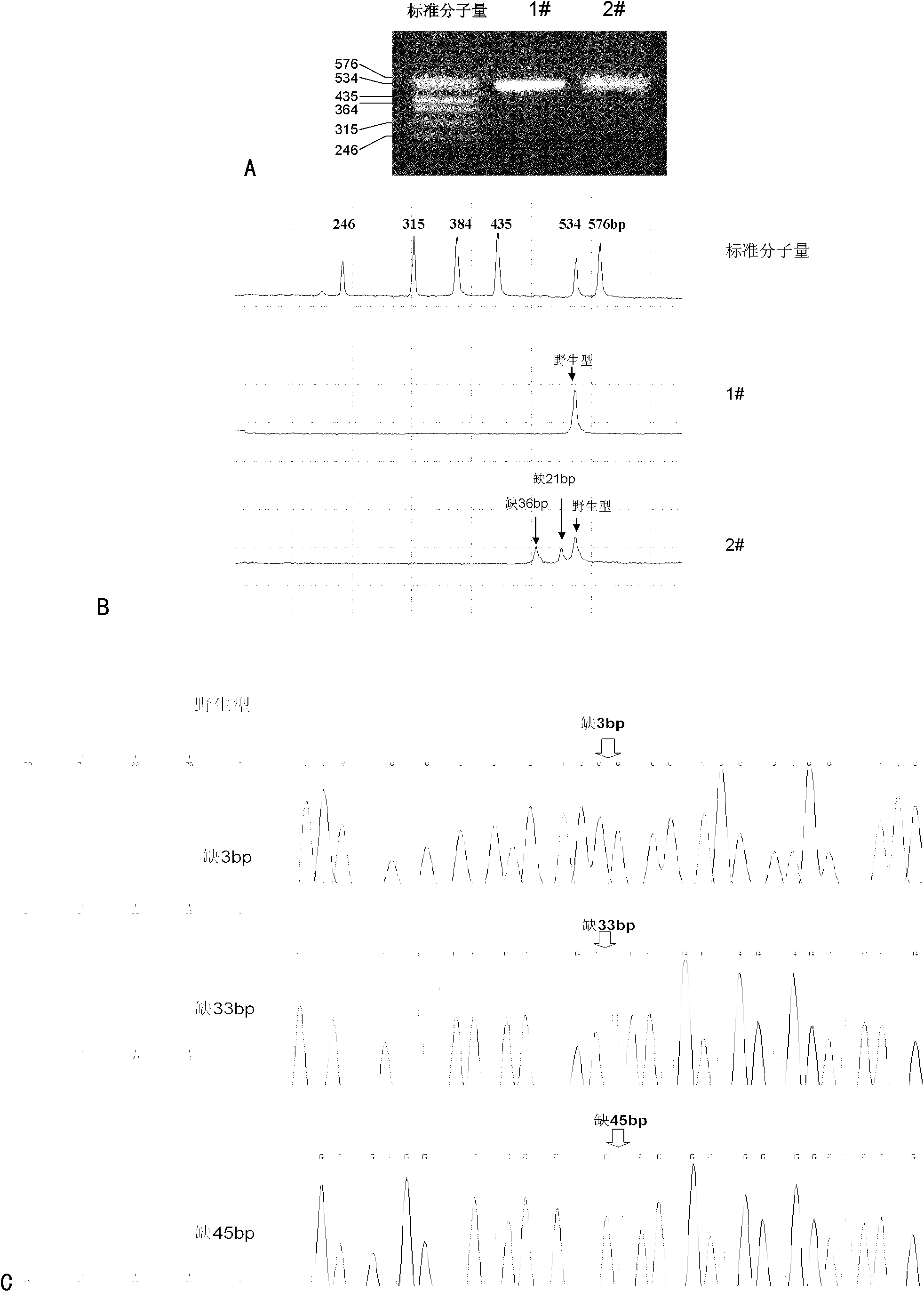Method and reagent for detecting HBV (hepatitis B virus) pre-S gene variation
A technology for hepatitis B virus and gene mutation, which is applied in the fields of biochemical equipment and methods, and the determination/inspection of microorganisms, which can solve the problems of low efficiency, inability to meet the requirements of simultaneous detection of large samples, and time-consuming
- Summary
- Abstract
- Description
- Claims
- Application Information
AI Technical Summary
Problems solved by technology
Method used
Image
Examples
Embodiment 1
[0124] Example 1. Detection of HBV Pre-S Region Deletion Variation in Serum Samples
[0125] In order to detect the deletion and mutation of the pre-S region of HBV in the patient's serum, the inventors amplified the HBV pre-S region nt.2815-133 by semi-nested PCR, and used capillary electrophoresis to detect the deletion of the amplified product. Such as figure 1 As shown, when the PCR product cannot be accurately judged whether there is a deletion in 1.5% agarose gel electrophoresis ( figure 1 A), capillary electrophoresis results clearly show that case 1# is wild-type HBV infection, and case 2# is wild-type and two types of deletion virus mixed infection ( figure 1 B).
[0126] The results of standard molecular weight capillary electrophoresis show that under the experimental conditions of the inventors, the method can accurately distinguish nucleotide fragments of about 10 bp. In order to further verify the accuracy of the method, the inventors randomly selected the HBV...
Embodiment 2
[0127] Example 2, Detection of the HBV Pre-S2 Gene Start Codon Mutation in Patient Serum Samples
[0128] The PCR amplification product is about 321bp in length, including the 3' end of the pre-S1 gene and all the pre-S2 genes. The wild-type sequence at the start codon of the pre-S2 gene is 5'-CATG-3', which is just the enzyme of the Nla III restriction enzyme The cleavage site can be digested into two fragments of 137bp and 184bp by Nla III enzyme; while in the mutant virus, the pre-S2 start codon ATG is mutated into various mutant forms such as ATT, ATA, ACG and GCG, which can no longer Digested by Nla III. Therefore, after the PCR product is digested with Nla III and electrophoresed on a 2.5% agarose gel, whether there is a mutation in the pre-S2 start codon can be judged according to the fragment length polymorphism of the enzyme fragment.
[0129] Such as figure 2 As shown, samples 2, 3, and 4 in which the pre-S2 start codon is not mutated (wild type) will be digested ...
Embodiment 3
[0130] Example 3, the relationship between HBV pre-S region mutation and liver cancer
[0131]According to the method for detecting pre-S deletion by capillary electrophoresis established above, the present inventors analyzed the variation of the pre-S gene of HBV in Qidong area. As a result, among 220 specimens in Qidong area, 30 cases (19 cases of liver cancer and 11 cases of hepatitis) were Pre-S gene deletion HBV infection, 56 cases (31 cases of liver cancer and 25 cases of hepatitis) were mixed infection of pre-S gene deletion virus and wild-type virus. There were 50 cases (45.5%) of patients with HBV pre-S deletion virus in total, and 36 cases (32.7%) in patients with chronic hepatitis, and the difference between the two was close to significant (P=0.053, Table 1) . The present inventor has carried out the detection of pre-S2 start codon mutation subsequently to the specimen without pre-S deletion, and as a result, there are 12 cases (10.9%) in liver cancer, and 5 cases...
PUM
 Login to view more
Login to view more Abstract
Description
Claims
Application Information
 Login to view more
Login to view more - R&D Engineer
- R&D Manager
- IP Professional
- Industry Leading Data Capabilities
- Powerful AI technology
- Patent DNA Extraction
Browse by: Latest US Patents, China's latest patents, Technical Efficacy Thesaurus, Application Domain, Technology Topic.
© 2024 PatSnap. All rights reserved.Legal|Privacy policy|Modern Slavery Act Transparency Statement|Sitemap



